Content warning
This story may contain sensitive material or discuss topics that some readers may find distressing. Reader discretion is advised. The views and opinions expressed in this story are those of the author and do not necessarily reflect the official policy or position of Vocal.
Unstoppable Versatility: Bell UH-1Y Venom Utility Chopper in the Field
AirPra
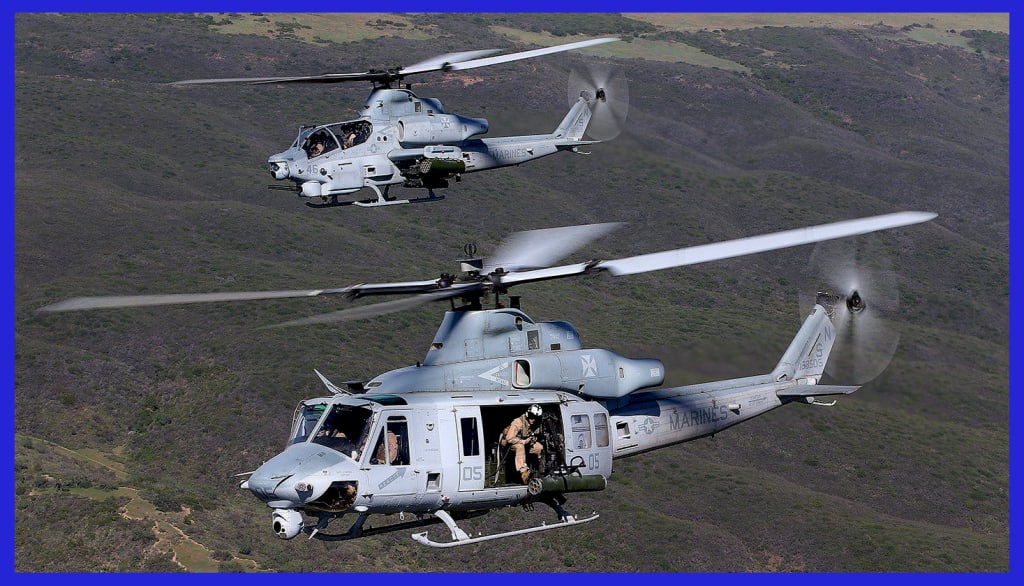
Unveiling the Bell UH-1Y Venom from the Huey Family reveals an enhanced and formidable version of the Bell UH-1N Twin Huey, meticulously developed to meet the exacting requirements of the United States Marine Corps (USMC). Remarkably, the UH-1Y Venom was purposefully redesigned in 2005 to deliver unparalleled performance and unmatched mission capabilities in both combat and support roles. This medium-sized, twin-engine utility helicopter, a true exemplar of the iconic "Huey" (Iroquois) family, boasts a sleek and aerodynamic design characterized by a slender fuselage, an expansive cockpit area, and a commanding, four-blade main rotor system. The tail rotor, positioned at the end of the tail boom, provides crucial anti-torque control, thereby ensuring unwavering stability during all phases of flight.
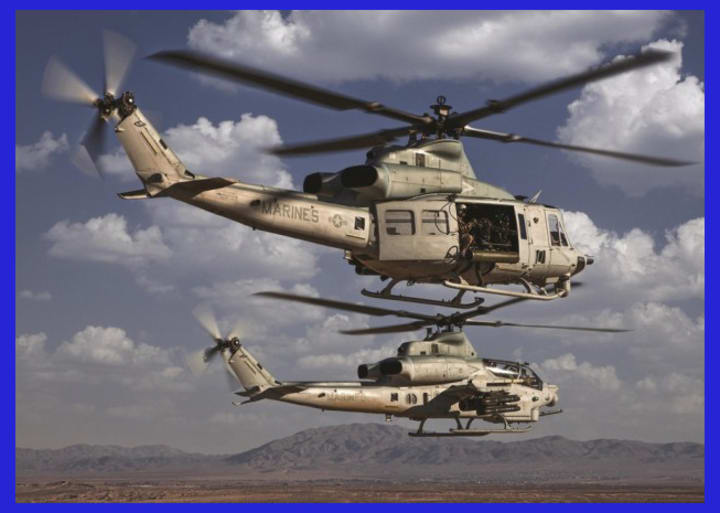
After entering service in 2008 and undergoing full-rate production, the UH-1Y replaced the USMC's ageing fleet of UH-1N Twin Huey light utility helicopters from the '70s, with deliveries to the Marines completed by 2018. One of the major advancements in the UH-1Y Venom lies in its avionics and systems. The helicopter boasts a modern glass cockpit equipped with state-of-the-art multifunction displays, presenting critical flight information, sensor data, and navigational data to the pilots in a clear and easily readable format. These advanced avionics and digital systems greatly enhance the pilot's situational awareness and operational effectiveness, particularly in complex or demanding missions.
Another noteworthy feature of the UH-1Y Venom is its exceptional mission flexibility. It exhibits the capability to perform a diverse range of tasks, including patient evacuation, search and rescue operations, and providing close air support. To accommodate its versatile mission profiles, the Venom incorporates two external hardpoints strategically positioned on small auxiliary wings that are attached to the main body of the helicopter. These hard points serve as mounting locations for a variety of armament systems, including machine guns, rocket pods, and, if required, air-to-air (stinger) missiles. With these armament capabilities, the UH-1Y Venom stands as a formidable combat helicopter.
In terms of survivability, the UH-1Y Venom has been engineered with advanced features to protect the crew and enhance overall survivability in demanding environments. The helicopter incorporates ten crash-worthy seats designed to mitigate the impact forces during a crash or hard landing. Additionally, the critical areas of the aircraft are reinforced with improved armour, providing enhanced protection against ballistic threats.
To counter potential threats, the UH-1Y Venom is equipped with advanced self-defence systems, including missile warning sensors capable of detecting incoming threats and initiating countermeasures to divert or neutralize them. Such defensive measures significantly enhance the helicopter's survivability in hostile environments.
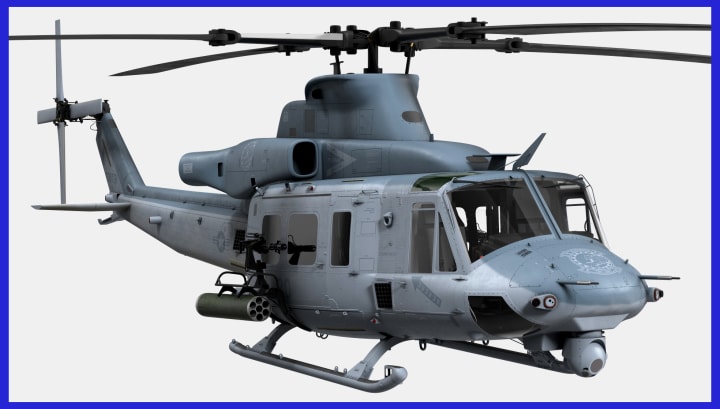
The Concept Behind The Development Of The Bell UH-1Y Venom:
The concept behind the UH-1Y Venom's development was to precisely build upon the proven success and unwavering reliability of the Huey family while meticulously incorporating advanced technologies and comprehensive modernization efforts. The primary and exact goal was to create a highly capable and adaptable helicopter that could effectively operate in a wide range of mission environments, encompassing both modern combat operations characterized by sophisticated warfare of the 21st century, as well as humanitarian assistance and disaster relief efforts.
In order to effectively compete with the growing presence of advanced Russian combat helicopters, including the likes of the Mi-17 Hip and Mi-28 Havoc, as well as the domestically produced Sikorsky S-70, it was imperative for Bell to undertake a comprehensive redesign of the highly renowned and combat-experienced UH-1N Twin Huey. This strategic initiative aimed to position Bell at the forefront of present-day sophisticated warfare scenarios, ensuring the company's continued relevance and competitiveness in the evolving landscape of modern combat aviation.
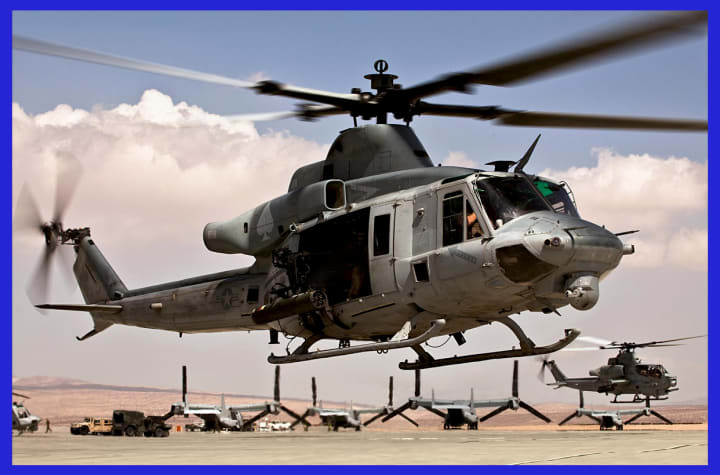
Hence, considering all future requirements, the United States Marine Corps launched the 'H-1' upgrade program in 1996. A contract was signed with Bell Helicopter to upgrade 100 UH-1Ns into UH-1Ys and 180 AH-1Ws into AH-1Zs. The primary objective of the H-1 program was to reconstruct the utility and attack helicopters with a significant design commonality, aiming to reduce operating costs. The UH-1Y and AH-1Z were designed to share a common tail boom, engines, rotor system, drivetrain, avionics architecture, software, controls, and displays, with over 84% of components being identical. Despite these similarities, they were constructed with four-bladed main and tail rotors, equipped with turboshaft jets.
Initially, the intention was to refurbish UH-1Y helicopters using UH-1N airframes. Nevertheless, in April 2005, authorization was granted to manufacture them as completely new aircraft. In the initial quarter of 2006, the UH-1Y helicopters were transferred to the Operational Test Unit situated at NAS Patuxent River, where comprehensive operational evaluation testing was initiated. Numerous assessments were conducted over the course of several years, leading to Bell's delivery of two UH-1Ys to the U.S. Marine Corps in February 2008.
Consequently, in August 2008, the Marine Corps officially certified the UH-1Y as fully operational, and it saw its inaugural deployment in January 2009 as part of the aviation combat element within the 13th Marine Expeditionary Unit. Following the successful attainment of the Initial Operational Capability (IOC), full-rate production of the UH-1Y commenced in September 2009. To replace their existing inventory of N-models, the Marine Corps has procured a total of 160 UH-1Y models to date. It is important to note that the UH-1N Twin Huey was retired by the Marines in August 2014, effectively establishing the UH-1Y as the designated standard utility helicopter for the Marine Corps, boasting complete compatibility.
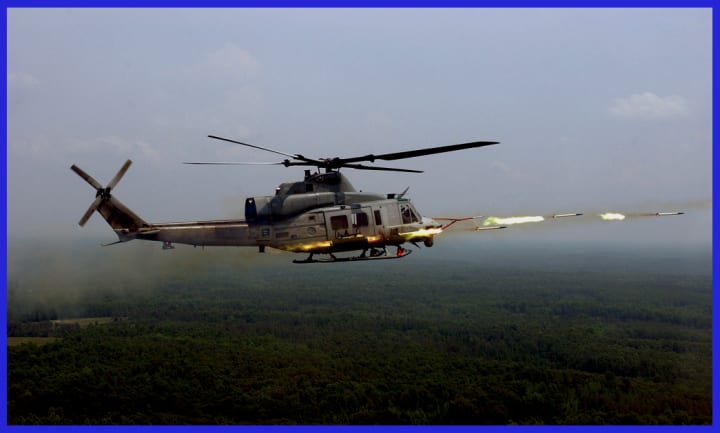
An Analysis of the Bell UH-1Y Venom Design:
The design of the Bell UH-1Y Venom incorporates several key elements that contribute to its versatility, performance, and operational effectiveness, aligning with the demands of 21st-century warfare requirements.
Overall Configuration: The UH-1Y Venom maintains the fundamental configuration of the Huey family, featuring a classic helicopter design with a four-bladed main and tail rotor system. This configuration offers more power, stability, and manoeuvrability enhancement, as well as the ability to hover and perform precise low-speed manoeuvres. Additionally, a 21-inch (530 mm) fuselage extension was added just forward of the main door to provide more capacity, allowing Venom's fuselage to accommodate troops and cargo, making it more suitable for various mission requirements.
Rotor System: The UH-1Y Venom is equipped with a four-blade, all-composite rotor system that has been specifically designed to withstand up to 23 mm rounds of bullets, making it highly suitable for search and rescue missions. The inclusion of four blades enhances the lift capability and rotor efficiency of the helicopter when compared to the original two-blade design of the Huey helicopters. As a result, this advanced rotor system enables better performance in terms of payload capacity, especially when the helicopter is carrying troops and arms. Additionally, it enables Venom to operate effectively in high-altitude conditions, as well as hot and high environments, which aligns with the utility role for which the 'Y'-model was originally designed.
Powerplant: The Venom is equipped with two General Electric T700-GE-401C turboshaft engines, each capable of generating approximately 1,800 horsepower. These high-performance engines not only provide increased power but also offer improved fuel efficiency, making the helicopter more economical to operate. With enhanced power and efficiency, Venom is capable of operating in demanding environments with greater ease. When compared to the previous UH-1N version, the 'Y'-model exhibits significant advancements. It boasts an increased payload capacity, allowing for the transportation of larger loads.
Additionally, it offers an impressive range that is nearly 50% greater, enabling it to cover longer distances without refuelling. The Venom also features a notable reduction in vibration, contributing to a smoother and more comfortable flight experience. Moreover, the helicopter attains a higher cruising speed of 182 mph, ensuring efficient and swift transportation. Furthermore, the twin-engine configuration not only provides redundancy but also enables Venom to continue flying even if one engine fails during any operation, ensuring safety and reliability.
Cockpit and Avionics: The UH-1Y Venom incorporates upgraded transmissions and a state-of-the-art digital glass cockpit that is equipped with flat-panel multifunctional displays. This advanced helicopter is equipped with cutting-edge avionics and digital systems, ensuring optimal performance. The cockpit layout has been thoughtfully designed to provide exceptional visibility for the pilots, while also integrating a modern forward-looking infrared system for enhanced capabilities. The inclusion of multifunction displays allows for effortless access to critical flight data, mission systems information, and navigational aids. The integration of these advanced avionics and digital systems significantly enhances pilot situational awareness, streamlines mission planning and execution, and facilitates effective communication and coordination during operations.
Weapon Systems Integration: The UH-1Y Venom has been meticulously designed with two external hardpoints that are strategically positioned on medium auxiliary hooks, which are securely attached to the main body of the helicopter. These hooks allow for seamless integration of a diverse array of weapon systems. The innovative design feature provides Venom with the flexibility to be armed with various Gatling or machine guns, rocket pods, and other ordnance, catering to the specific demands of different mission requirements. By facilitating the carriage and deployment of weapons, Venom significantly enhances its combat capabilities, particularly in terms of close air support. This integration empowers the helicopter with increased effectiveness and versatility in combat scenarios.
Commonality with AH-1Z Viper: The UH-1Y Venom boasts a significant commonality with the AH-1Z Viper attack helicopter, sharing a common platform. This commonality extends to internal design, components, and systems, resulting in streamlined maintenance, logistics, and training efforts. The shared platform enables cost savings, enhances operational efficiency, and promotes seamless joint operations and interoperability between the UH-1Y Venom and the AH-1Z Viper. This interoperability fosters improved coordination and enhances mission effectiveness, enabling smarter and more precise execution of operations.
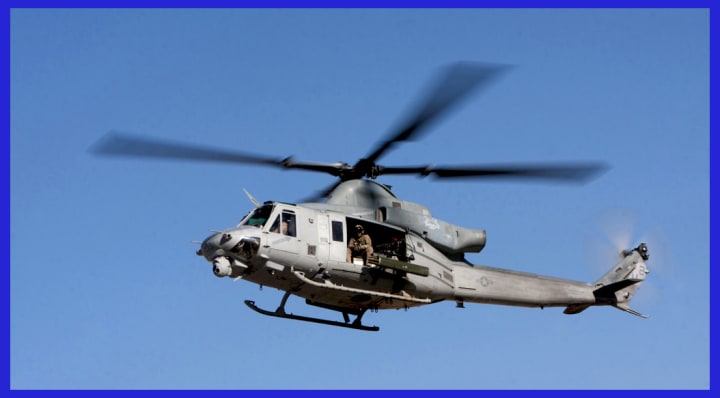
Technical Specifications Of The Bell UH-1Y Venom:
- Crew: 2 members ( pilot and co-pilot )
- Total Capacity: Up to ten crashworthy troop seats / six litters / and equivalent cargo weighing 3,021 kg ( 6,660 lb )
- Length: 58 ft 4 in ( 17.78 m )
- Height: 14 ft 7 in ( 4.45 m )
- Empty Weight: 5,371 kg ( 11,841 lb )
- Gross Weight: 8,391 kg ( 18,499 lb )
- Power plant: 2 × General Electric T700-GE-401C turboshaft, 1,828 hp ( 1,363 kW ) each
- Main rotor diameter: 48 ft 10 in ( 14.66 m )
- Main rotor area: 1,808 sq ft ( 168.0 m/sq )
- Maximum Speed: 304 km/h ( 189 mph )
- Average Cruise speed: 293 km/h ( 182 mph )
- Combat range: 240 km ( 149 mi ) with 1,000 kg ( 2,205 lb )
- Endurance: 3 hours+
- Service ceiling: Estimated 20,000 ft ( 6,096 m ) or more
- Rate of climb: 2,520 ft/min ( 12.8 m/s )
- Armament: On 2 external stations, there are combinations available to carry 70 mm (2.75 in) Hydra 70 or APKWS (advanced precision kill weapon system) rockets, machine guns, and six-barrel rotary machine (gatling) guns
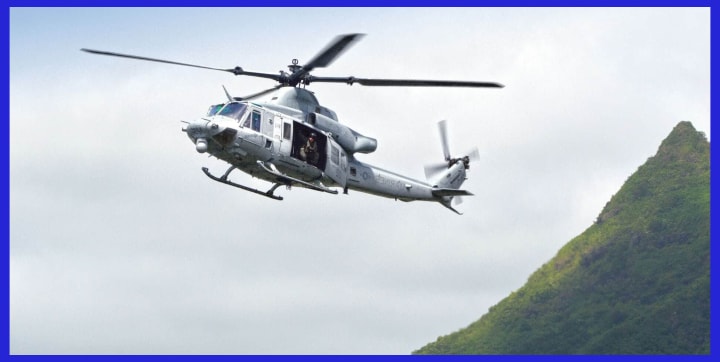
In conclusion, the Bell UH-1Y Venom has carved a remarkable operational history within the United States Marine Corps (USMC). Since its introduction, Venom has served as a versatile and highly capable platform, delivering exceptional performance across a range of missions and operational environments. Whether deployed in combat operations, providing close air support, conducting search and rescue missions, or participating in humanitarian assistance efforts, Venom has consistently demonstrated its effectiveness and reliability.
With its upgraded avionics, powerful engines, advanced weapon systems, and enhanced survivability features, the UH-1Y Venom has proven its value as a modernized utility helicopter. Its ability to adapt to diverse mission requirements, combined with its commonality with the AH-1Z Viper, has further solidified its operational effectiveness and facilitated joint operations.
As the UH-1Y Venom continues to serve as an integral part of the USMC's helicopter fleet, it remains a symbol of the enduring legacy of the Huey family. With its legacy rooted in the past and its design embracing the future, Venom stands as a testament to its ongoing commitment to innovation, versatility, and operational excellence within the USMC.
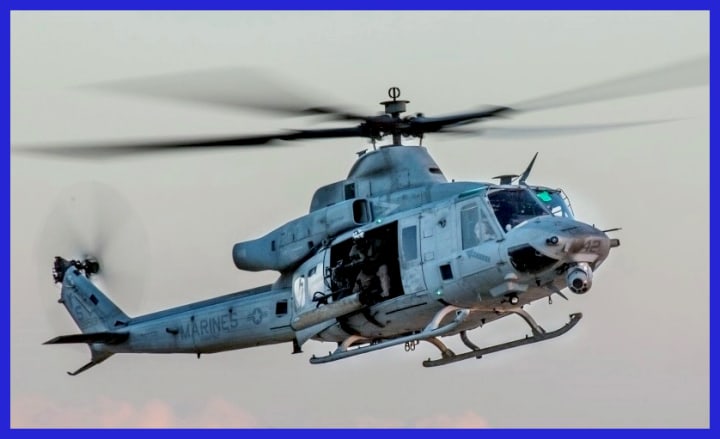
About the Creator
Prajesh Majumdar
Hi there, I'm Prajesh, the creator of airpra.com
The site is dedicated to nurturing a community of individuals with a keen interest in exploring the intricate aspects of defence equipment and related news.
Enjoyed the story? Support the Creator.
Subscribe for free to receive all their stories in your feed. You could also pledge your support or give them a one-off tip, letting them know you appreciate their work.


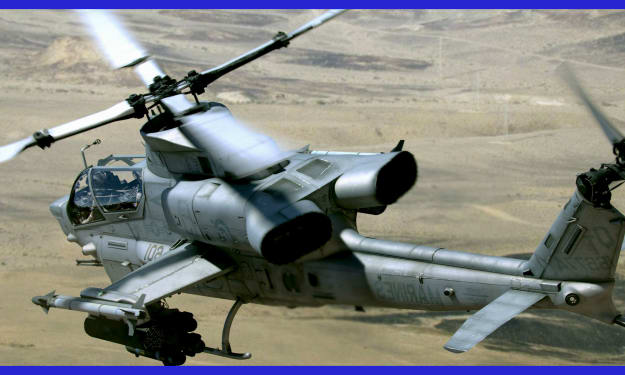



Comments
There are no comments for this story
Be the first to respond and start the conversation.